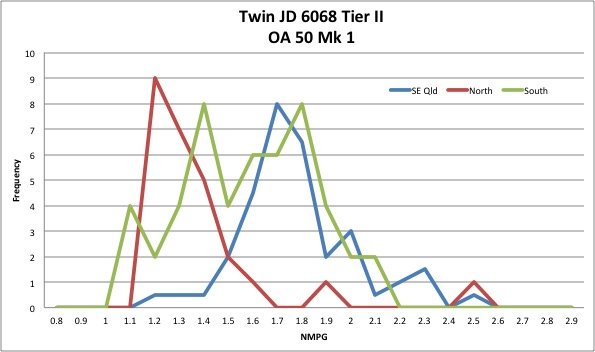Jeff F
Guru
- Joined
- Nov 5, 2015
- Messages
- 2,435
- Location
- Canada
- Vessel Name
- Escapade
- Vessel Make
- 50` US Navy Utility trawler conversion
Looking ahead think of the Loop. You can go 6000 miles or 8000. Let's go with 6000 nm. If you're getting 2 nmpg, that's 3000 gallons or 3 nmpg that's 2000 gallons. At $3 per gallon, it's $9000 or $6000.
Now, let's look at a Beneteau Swift Trawler as a representative of semi-planing. At 7 knots, you get 2.1 nmpg, at 10 knots you get 0.7 nmpg, at anything from 12 to 21.3 knots, you get 0.5 nmpg. On the performance curve for that boat you see huge differences. So you could do 6000 nm with only 2857 gallons but if you decided to spend half your time at 10 knots you'd use 4285 gallons. And, if you decided 1/3 of your time at 7 knots, 1/3 at 10 knots and 1/3 at 15 knots, now you're more like 5485 gallons. So, obviously on this boat you can impact your fuel cost by as much as $7,884. Suddenly the insignificant fuel cost may not be as insignificant.
I'd add that what nobody talks about is what the number for the ST would be at 6 knots. If it's 2.1 @7.0 I'd wager it's > 3.0 nmpg @6.0. Maybe that's outside design specs for that particular boat, but there are huge economies in traveling at no wake speeds. But few are patient enough to do it.

